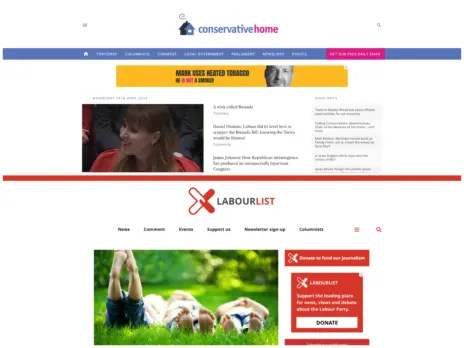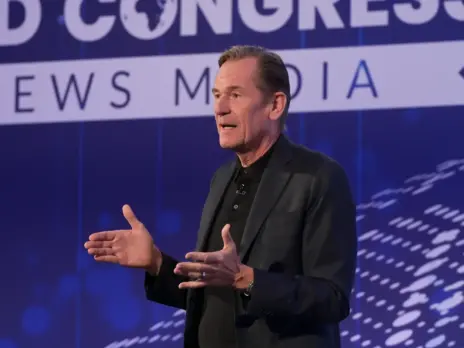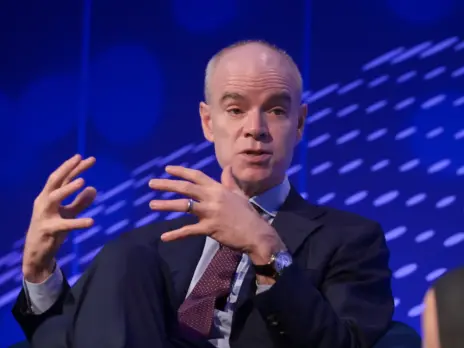
Two in five journalists (41%) who responded to a Press Gazette survey about racism and bigotry in the UK news media said they had personally experienced or witnessed it in the newsroom.
The figure rises to more than half for those who said they work in the tabloids (55%) and broadsheet (53%) press, and as high as three in five (59%) for broadcast media, the survey data shows.
Our anonymous survey was carried out between 22-26 March 2021 and sent via email only to the 10,000 readers of Press Gazette’s email newsletters, which are sent out to an audience of media professionals.
We received responses from 721 who described themselves as journalists, split roughly in half by seniority – recorded as reporter/sub-editor or manager/editor – and covering a range of media sectors, from national and local press to broadcast. The majority (68%) of respondents identified as White British.
The survey revealed that black journalists are most likely to have known racism in the workplace, with three quarters (74%) answering “yes” to the question: “Have you personally experienced, or witnessed, racism whilst working in the UK Media?”
White journalists are least likely to have known racism in the workplace, with just over a third (37%) answering “yes”.
Journalists working for non-UK newsbrands are least likely to have been subject to or seen racism at work (24%), rising to a third (32%) for regional/local newsbrands, the lowest for the UK.
Read more:
- Meghan coverage was racist according to half journalists filling out Press Gazette survey
- Two third of journalists say UK media bigoted in some way
- Comment: Prince Harry has highlighted an issue for the news industry which needs to be addressed
Journalists share their experiences of racism in UK newsrooms in Press Gazette survey
Press Gazette also asked survey respondents to share their personal experiences of racism within the UK media, a large number of whom did, with some clear trends emerging. Journalists frequently cited a lack of diversity in the newsrooms they had worked in.
One survey respondent, who identified as a white British manager/editor working on a specialist/business title, said: “In every newsroom I’ve worked in bar one, the only black Brits were the cleaners.”
A white British manager/editor working in regional news, who agreed the UK media is bigoted/racist but said they had not personally witnessed/experienced racism, said: “In my more than 30-year career, I could count on one hand the number of newsroom colleagues from a different ethnic background.”
[Read more: Ex-BBC journalist Kurt Barling ‘bigotry’ and media: Racism exists everywhere, even in newsrooms]
According to one respondent, a manager/editor of mixed ethnicity, this lack of diversity could manifest itself as unconscious bias among staff. They told Press Gazette’s survey that while working at a national broadsheet a black colleague of theirs was “occasionally mistaken as IT support staff”.
“People, unconnected to our team, who may have been looking for someone from the IT department, would ask him to come and sort out their computer issues, despite the fact that he sat with other journalists and nowhere near the IT department,” they said.
“I never notice that happen towards light-skinned journalists. The journalist in question took it with good humour, but it was obvious to me, at least, that while it was not evidence of racism, it did point to a degree of subconscious racial bias about what journalists look like.”
A mixed white and black Caribbean manager/editor who now works in PR wrote of the “deliberate confusion of Asian reporters’ names”, the “ghettoising” of minority ethnic reporters into “specific types of reporting to do with their perceived ‘communities’” and the “clear lack” of ethnic minority colleagues in senior positions in newsrooms.
Together with a “hostile environment” in which they said “racialised coverage” is decided on by the leadership team, they said this “impacts on the mental health of black, Asian and minority reporters to feel they can work in this environment” with many leaving as a result.
Other trends emerging from shared experiences include the prevalence of “casual” racist jokes and comments in newsrooms, particularly during the 1960s, 70s, 80s and 90s. Although many respondents said it had improved since then, some thought that, in fact, it had gotten worse.
A white reporter/sub-editor working on a broadsheet said: “A long time ago now, but my Irish heritage was mocked by a few people with ‘jokes’ or references to Ireland being backward or full of terrorists. Now Muslims and people of colour get that treatment.”
An Indian manager/editor at a broadsheet said they were told they had replaced another Asian reporter and were “asked if I was sitting at the corner desk and would I be opening a shop”. They said they were “told that terms and conditions offered to white reporters were not available to me”.
A more pernicious theme emerging from the anecdotes shared by survey respondents is of stories about people of colour being dismissed by editors in the belief that they wouldn’t sell newspapers.
A white British manager/editor at a broadsheet said they were told by a tabloid editor in 1990: “We don’t run stories about ‘dusky’ people.”
A White British reporter/sub-editor working on a tabloid said: “Working at a national press agency up until 2017, I was repeatedly told – and saw for myself – that real-life stories about black people would not be as readily commissioned by newspapers and magazines.
“If they were commissioned, publications paid less and often featured them less prominently than for stories about white people. Outside of BLM [Black Lives Matter] coverage, there’s a general lack of stories published about issues that affect black and ethnic minority communities.”
A White British manager-editor working at a broadsheet said: “It was quite open in the late 80s and 90s. Editors would ask if someone was white. Black victims of crimes were not the same as white victims.”
They added: “While there is prejudice among readers newspapers will mirror it to some degree – the habit of reflecting what readers want to hear is deep in the DNA of the British press.”
A white British manager/editor at a regional newsbrand said that in the 1960s and 1970s, “every outlet” was racist or bigoted. “Black stories were not so valuable as white stories. Often they got no market. Ditto in women’s mass-circulation magazines in the 1980s and 1990s.
“Racism is often present but unspoken – high-profile murder victims tend to be white (with a good photo): Sarah Everard, the Soham murders; if they had been black, there wouldn’t have been anything like the level of attention. It’s still true. Can you think of a black girl’s murder which made big headlines. The first thing editors want to see is the photo. White good, black sidelined.”
This view of the commercial viability of stories about people of colour could even extend to which reporters are chosen to cover certain stories.
A white reporter/sub-editor working in consumer magazines said: “I’ve heard editors choose white reporters to cover certain features (especially interviews) based on their belief that the story or subject of the feature doesn’t like black people… The editors have done it to appease the interviewee and, probably to a smaller extent, save the black reporter hassle, but it’s still racist.”
A Middle Eastern reporter/sub-editor working at a national broadcaster, said of racism at work: “Most of the time the racism is subtle and insidious. It plays out in the way people are bullied, treated less favourably, sidelined, repeatedly and over many years overlooked for promotion even when they outperform their white peers. It is in poor coverage or language used that reinforces negative stereotypes for example of Muslims, or black people, even if it is unwitting.
“And it often comes back to the abuse of power and influence over those without. It plays out in the impact it has on people’s lives and mental health. It is death by a thousand cuts which are very visible to us but invisible to the white majority group who are not impacted by them, but who are quick to deny its existence, which only adds to the deep despair and frustration of those who know only too well the reality.
“Even after #BLM and the killing of George Floyd and the outpouring of anger last year, which was a response not only to that tragedy but a reminder of what so many black and minority ethnic people face both in society and the workplace – even then, the Society of Editors chose to be in denial.”
A mixed white/Asian reporter on a national broadcaster said that despite being “a half white, half oriental person” they were deemed “Asian” at their place of work and seen as a “person of colour”. “That means I am worth less than all white men and all white women,” they said.
“I’ve had famous people you see on TV use racist terms… in front of me. I’ve been asked by colleagues to ‘prove’ how British I am… I’ve experienced so many microaggressions and weird comments, and when colleagues see these comments made to me openly, they say nothing and let it continue. And they’re almost all white.”
One respondent, a White British tabloid reporter/sub-editor, said: “I think these days there is much less overt racism, but bias still operates in a more subtle way in terms of what gets prioritised on the news agenda.
“Also, how much credence individuals are given, how sympathetically they are treated or how their actions are interpreted – and I’m thinking about Meghan [Markle] here as well – this can be as a result of hidden racism, unacknowledged even by the people who perpetrate it.”
Who filled out the survey?
While the poll sample was self-selecting, with readers choosing whether to take part, it still contained a large cross-section of responses from across the industry and beyond.
Respondents were anonymous but confined to verified Press Gazette email subscribers – with each subscriber only allowed to fill out the survey once.
Email pged@pressgazette.co.uk to point out mistakes, provide story tips or send in a letter for publication on our "Letters Page" blog






